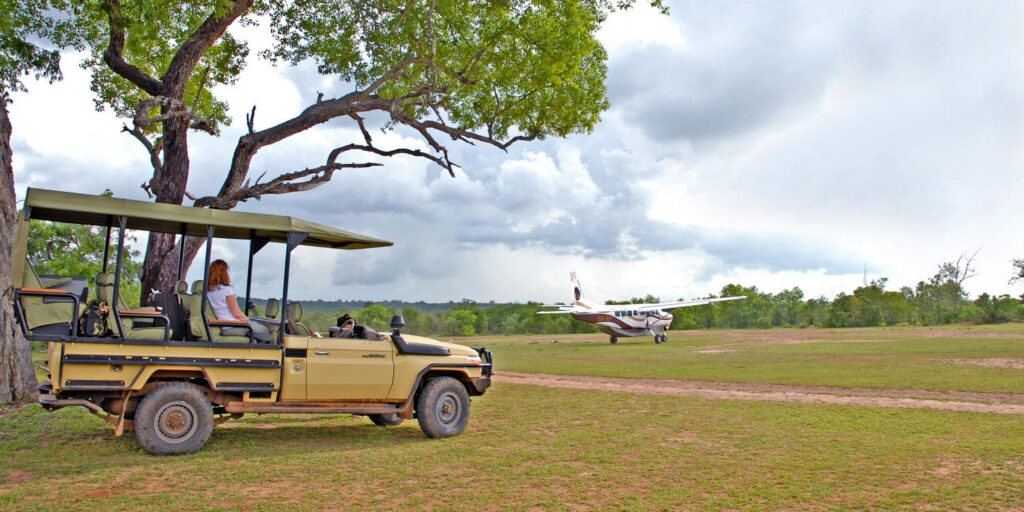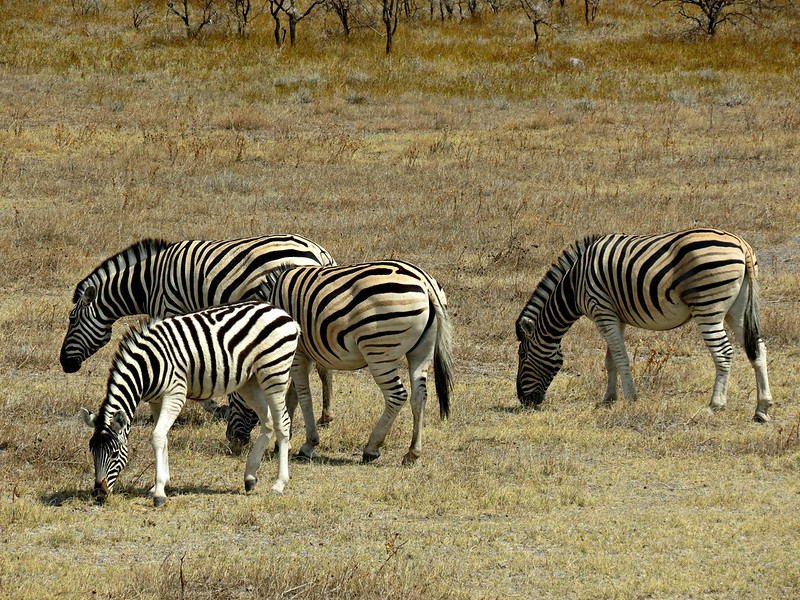How do I go to Nyerere National Park?
Nyerere is situated in the southern region of the country and, despite its distant location, it is among the select parks that merit inclusion on your itinerary when visiting Tanzania. The designation Nyerere has recently been altered, and the largest game reserve in Tanzania and Africa is now referred to as Nyerere National Park.
The park may not be as renowned as other National Parks in Tanzania’s Northern Circuit, nevertheless it hosts a considerable array of wildlife that merits the journey south for observation. There are several methods to reach Nyerere: one may drive from Dar es Salaam, utilize the railway, or employ a chartered aircraft. Regardless of the chosen mode of transport, a knowledgeable tour guide will ensure your safe arrival at the National Park, allowing sufficient time to appreciate its offerings.
Railway transport network
The railway system is the most economical means of transportation to reach Nyerere National Park. The Tanzania Zambia Railway (TAZARA) will transport you to the Reserve, with a journey duration of approximately 4 to 5 hours. The railway journey will commence in Dar es Salaam and conclude in Matabwe, where you will disembark before transferring to a van for transport to Selous. The train will traverse some of the most stunning vistas of southern Tanzania, including mountains and several settlements, allowing you to appreciate the picturesque surroundings.

Road Transport
Road travel is the predominant mode utilized by tourists visiting Nyerere National Park. There are limited routes available for a driving safari to the park, all commencing from Dar es Salaam. This is a delightful experience, allowing you to view the scenery of southern Tanzania, including the Uluguru Mountains, while driving. One may also pause at other villages en route to capture photographs and sample local cuisine before resuming the journey.
The primary road is from Dar es Salaam via Mikumi National Park to the Matambwe gate, which serves as the principal access to the Reserve. Upon arrival at the gate, you will require a few minutes before you can commence your exploration of Nyerere National Park.
Numerous unconventional routes offer scenic enjoyment, one of which traverses Morogoro, providing a clear vista of the mountain slopes and surrounding villages; while driving, one may encounter wild animals crossing the road. This itinerary is optimal for those integrating their safari to Nyerere with additional National Parks located in the southern circuit. The journey will commence in Dar es Salaam, proceeding through the cities of Mkuyuni and Kisaki, then Morogoro, ultimately arriving at the Matambwe gate, which provides access to the Game Reserve.
The alternative route commences in Dar es Salaam, traversing through Mloka and Kibiti, ultimately arriving at the Mtemere gate, which provides access to Nyerere National Park. This path will require approximately 7 hours to reach the Reserve. We suggest Self Drive Tanzania for your road vacations.
Road Transport
Air transportation is the most convenient although costly method to reach Nyerere National Park. A multitude of flights are available to access the Reserve, which may be conveniently arranged at several airports throughout Tanzania. The most convenient airport is Julius Nyerere International Airport, although access is also available via Arusha and Zanzibar. These planes arrive at various airstrips adjacent to the Park, where a van will be available to transport you into the national Park.
Activities in Nyerere National Park
Wildlife Expeditions
Participating in a wildlife safari at Nyerere National Park provides an unparalleled chance to witness Tanzania’s varied animals. Visitors can traverse the park’s diverse ecosystems, including forests, savannahs, and marshes, to observe numerous species. The park is renowned for its substantial population of hippopotamuses and crocodiles along the Rufiji River, rendering it a crucial site for conservation initiatives. Nyerere National Park, in addition to hippopotamuses and crocodiles, hosts a diverse array of species including lions, cape buffaloes, elephants, leopards, plains zebras, wildebeest, African wild dogs, and other antelopes. Wildlife safaris in the park are done at set periods, specifically during early morning and evening excursions. While on wildlife safaris in the park, you will get the opportunity to observe a diverse array of captivating animals, including vibrant birds and blooming flora. Guided tours, whether conducted by vehicle or on foot, provide guests the opportunity to acquire knowledge about animal behavior and ecosystems from knowledgeable guides.

Bird Watching
Nyerere National Park is renowned as a premier site for birdwatching and one of the finest birding locales in Tanzania. The park hosts more than 450 avian species, encompassing both migratory and resident birds. Birdwatching tours in Nyerere National Park provide numerous opportunities to observe avian species including the Great Reed Warbler, Black Sawing, Ethiopian Swallow, Red-Faced Crombec, Yellow-Billed Eremomela, Black-Headed Apalis, Red-Faced Cisticola, Piping Cisticola, Yellow-Bellied Hyliota, Rufous-Bellied Tit, Dusky Lark, and Western Nicator. Rufous-Napped Lark, Pale Batis, Short-Tailed Batis, Marsh Tchagra, Black-Backed Puffback Chestnut-Fronted Helmet Shrike, Black-and-White Shrike-Flycatchers, African Skimmer, African Fish Eagle, Black-Winged Stilt, Brown-Headed Parrot, Broad-Billed Roller, Dickinson’s Kestrel, Northern Carmine Bee-Eater, Palm-Nut Vulture, Pearl-Spotted Owlet, Pel’s Fishing-Owl, and Purple-Crested Turaco, among others.
Nature Walks
Hiking and nature hikes provide the optimal safari experience for travelers at Tanzania’s Nyerere National Park. Hiking and nature walk excursions provide an opportunity to discover the park’s concealed treasures on foot, enabling visitors to navigate its varied terrain while seeing wildlife and vegetation at a relaxed pace. The hiking trails differ in difficulty, accommodating both experienced hikers and families desiring a leisurely walk. These guided walks navigate biological zones, offering intriguing insights into species interdependence and the importance of conservation efforts in safeguarding this unique ecosystem.
Sport Fishing
Sport fishing is among the most remarkable activities in Nyerere National Park. Sport fishing in the national park often occurs in the Rufiji River and its tributaries, providing an opportunity to catch several marine species, including Tilapia and Catfish, among others. At the tranquil waters, one can fish accompanied by the melodic sounds of chirping birds and the grunts of hippos and crocodiles, seemingly encouraging your efforts. You are permitted to retain your catch for roasting, frying, or grilling, allowing you to savor the flavor of fresh fish from Tanzania.
When is the best time to visit Nyerere National Park?
The optimal period to visit Nyere National Park is during the dry season, generally occurring from June to October. At this time, the park exhibits its utmost vibrancy, characterized by verdant foliage, plentiful fauna, and unclouded azure skies. The scarcity of precipitation results in animals being more readily observable as they gather around water sources, creating exceptional possibilities for game viewing.
Accommodation options in Nyerere National Park
Nyerere National Park offers a variety of hospitable and comfortable lodging options for your Tanzania safari, including luxury, midrange, and budget accommodations such as Impala Tented Camp, Kiba Point Safari Lodge, Rufiji River Camp, The Amara Selous, The Retreat Selous, Siwandu Camp, Beho Beho Lodge, Mbuyu Safaris Camp, Sable Mountains Lodge, Lake Manze Tented Camp, and Jimbiza Lodge, among others.
Reach out to our reputable tour operators for details and inquiries regarding access to Nyerere National Park. Consider booking with our travel companies, such as All Tanzania Safaris , which provide exceptional tour packages for your safari in Tanzania.
